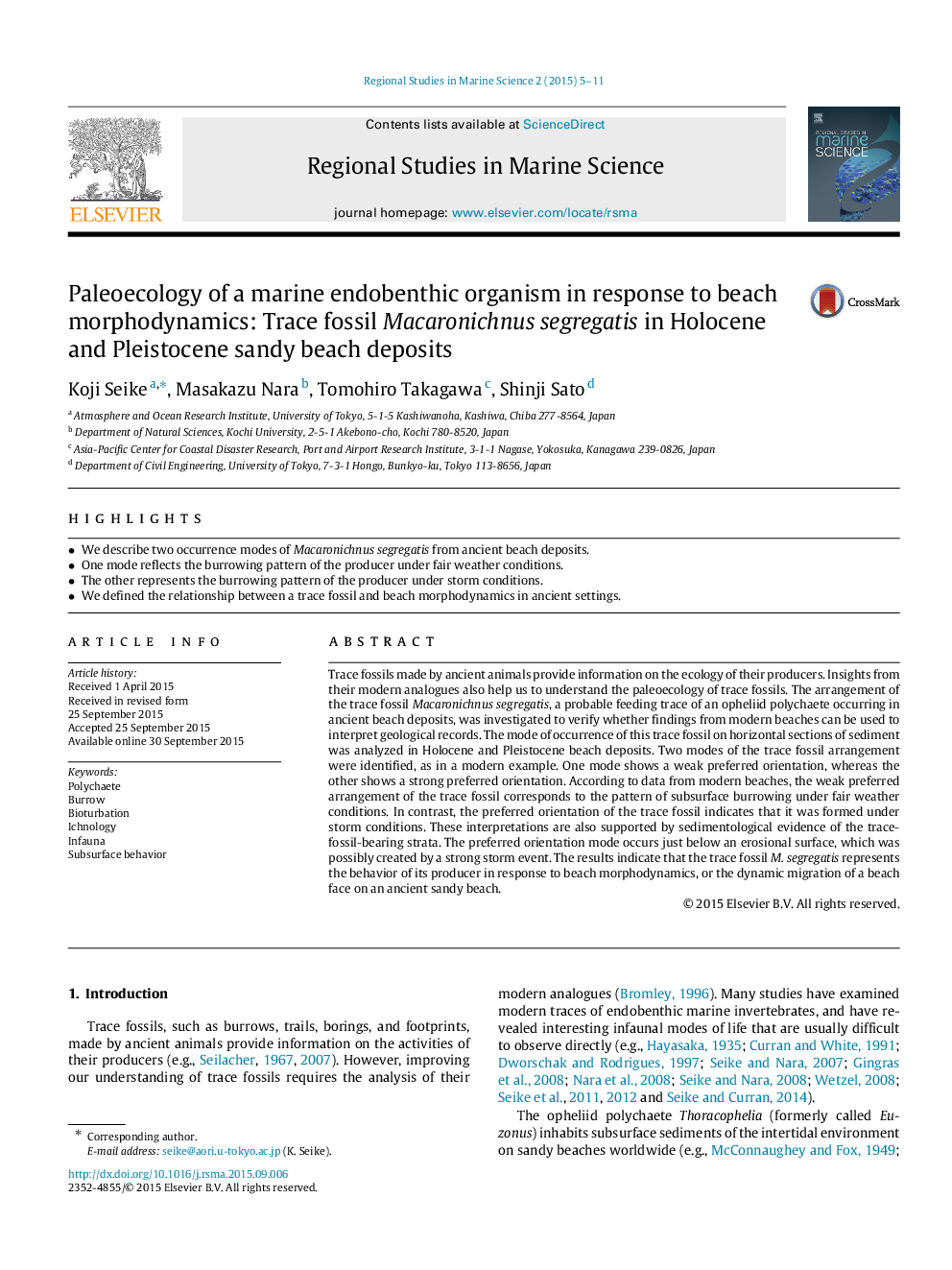| Article ID | Journal | Published Year | Pages | File Type |
|---|---|---|---|---|
| 4478184 | Regional Studies in Marine Science | 2015 | 7 Pages |
•We describe two occurrence modes of Macaronichnus segregatis from ancient beach deposits.•One mode reflects the burrowing pattern of the producer under fair weather conditions.•The other represents the burrowing pattern of the producer under storm conditions.•We defined the relationship between a trace fossil and beach morphodynamics in ancient settings.
Trace fossils made by ancient animals provide information on the ecology of their producers. Insights from their modern analogues also help us to understand the paleoecology of trace fossils. The arrangement of the trace fossil Macaronichnus segregatis, a probable feeding trace of an opheliid polychaete occurring in ancient beach deposits, was investigated to verify whether findings from modern beaches can be used to interpret geological records. The mode of occurrence of this trace fossil on horizontal sections of sediment was analyzed in Holocene and Pleistocene beach deposits. Two modes of the trace fossil arrangement were identified, as in a modern example. One mode shows a weak preferred orientation, whereas the other shows a strong preferred orientation. According to data from modern beaches, the weak preferred arrangement of the trace fossil corresponds to the pattern of subsurface burrowing under fair weather conditions. In contrast, the preferred orientation of the trace fossil indicates that it was formed under storm conditions. These interpretations are also supported by sedimentological evidence of the trace-fossil-bearing strata. The preferred orientation mode occurs just below an erosional surface, which was possibly created by a strong storm event. The results indicate that the trace fossil M. segregatis represents the behavior of its producer in response to beach morphodynamics, or the dynamic migration of a beach face on an ancient sandy beach.
